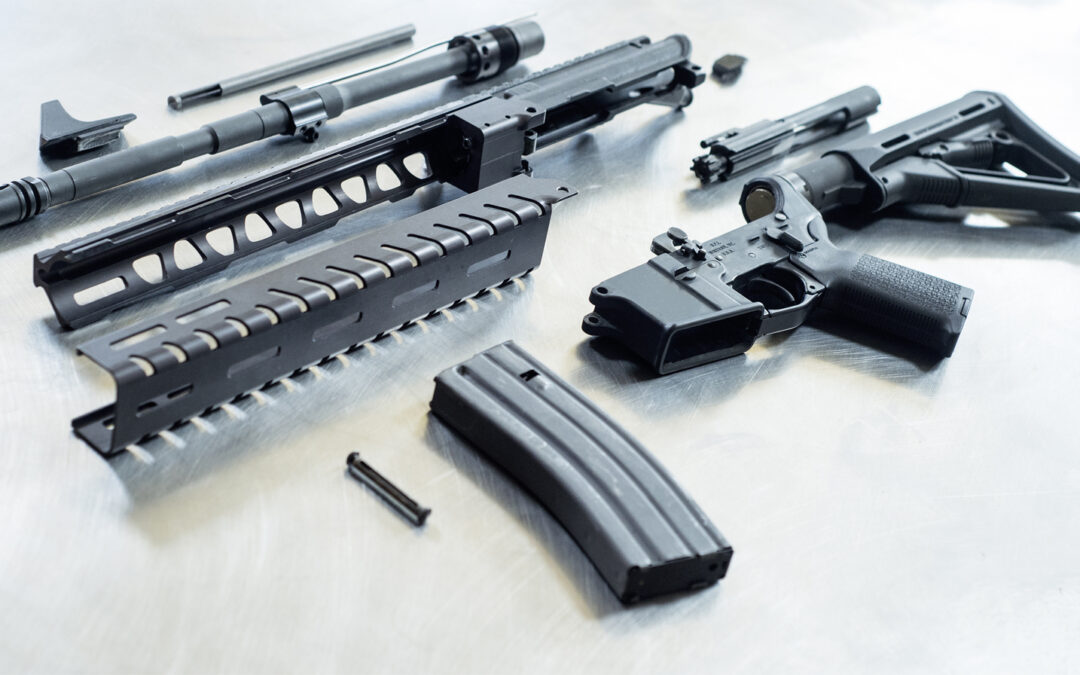Congratulations on your new AR-15 – a true testament to modern engineering and versatility. Maintaining it properly is essential for ensuring it continues to function at its best. Regular care goes a long way in keeping your AR-15 reliable, safe, and accurate, which is crucial for any firearm.
We’ll explore five key tips to help you maintain your AR-15: effective cleaning methods, choosing the right lubrication, regular inspections for wear, selecting suitable ammunition, and the importance of proper storage and handling. Each of these tips plays a vital role in keeping your AR-15 in top condition.
We will also delve into common issues that may arise, offering practical solutions, and shed light on the legal and safety aspects of owning and maintaining an AR-15. For those who are more experienced, advanced maintenance techniques will be introduced to further enhance your AR-15’s performance and longevity. Let’s embark on this journey of responsible and effective firearm ownership.
Understanding Your AR-15: Anatomy and Function
The AR-15, a rifle celebrated for its modularity and precision, comprises several key components that work in unison to deliver its exceptional performance. Understanding these parts is crucial for effective maintenance and troubleshooting.
At the heart of the AR-15 is the lower receiver, which houses the trigger assembly, magazine well, and buttstock. This is where the user interacts with the firearm, making it a critical point for maintenance and inspection. The upper receiver, attached to the lower receiver, includes the barrel, bolt carrier group, and charging handle. The barrel’s quality directly influences the rifle’s accuracy, while the bolt carrier group and charging handle play pivotal roles in the firing and reloading processes.
The gas system, an essential component of the AR-15’s semi-automatic mechanism, uses the gas from a fired cartridge to cycle the action. It consists of a gas block, tube, and the bolt carrier group. Proper maintenance of the gas system is vital for ensuring the rifle cycles reliably.
Finally, the handguard and muzzle device are also important. The handguard protects the user’s hand from the heat generated during firing and can serve as a mounting point for accessories. The muzzle device, typically a flash suppressor or muzzle brake, helps reduce recoil and muzzle rise.
Understanding these components and their functions lays the foundation for maintaining your AR-15. Each part plays a role in the rifle’s overall performance, and knowing how they work together helps in identifying and addressing potential issues during maintenance.
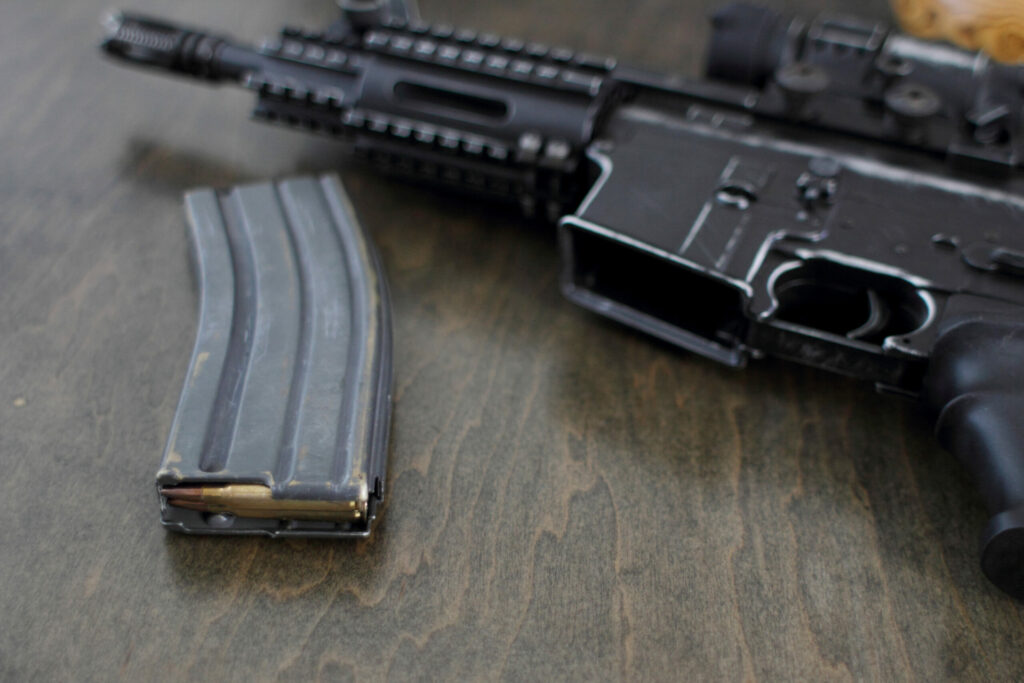
Tip 1: Comprehensive Cleaning Techniques
Keeping your AR-15 clean is fundamental to its performance and longevity. Here’s a detailed guide on how to clean each component effectively while avoiding common mistakes.
Upper Receiver and Barrel: Start by separating the upper receiver from the lower. Use a bore brush and solvent to clean the barrel’s inside. Be sure to work from the rear to the front to avoid damaging the barrel’s crown. After scrubbing, run a patch soaked in solvent through the barrel until it comes out clean. Then, dry it with a clean patch and apply a light coat of oil. Avoid over-lubricating as it can attract dirt.
Bolt Carrier Group: Disassemble the bolt carrier group. Clean each part with a brush and solvent, focusing on the bolt, firing pin, and bolt carrier. Check for carbon build-up, especially on the bolt’s tail, and use a specialized tool or pick to remove it. After cleaning, lightly oil the parts before reassembling. A common mistake is neglecting the small areas where grime accumulates.
Lower Receiver: Wipe down the inside of the lower receiver with a clean cloth. Pay attention to the trigger assembly and magazine well. Use a small brush to remove any dirt or debris. Lubricate the trigger mechanism lightly, but avoid excess oil which can attract dust.
Gas Tube and Gas Block: Cleaning the gas tube is tricky and often overlooked. Use a long pipe cleaner with solvent to remove any residue. The gas block should be checked for any obstructions and cleaned with a brush.
Handguard and Accessories: Remove the handguard and clean around the rail system. If you have optics or other accessories mounted, ensure their connections are tight and free of dirt.
Common Mistakes:
- Over-lubrication: Excess oil can attract grime. Apply oil sparingly.
- Ignoring Small Parts: Small components like the firing pin or the area around the gas rings are crucial and should be cleaned thoroughly.
- Forcing Cleaning Tools: Use appropriate-sized brushes and rods to avoid damaging your AR-15.
Regular cleaning, following these detailed steps, will not only keep your AR-15 functioning smoothly but also extend its lifespan, ensuring it’s ready and reliable when you need it.

Tip 2: Proper Lubrication for Optimal Performance
Lubrication is as crucial as cleaning for keeping your AR-15 in top condition. The right lubrication reduces friction, prevents wear, and ensures smooth operation. Here’s how to properly lubricate your AR-15, including recommendations for products and application techniques.
Product Recommendations:
- CLP (Clean, Lubricate, Protect): A popular choice for AR-15 owners, CLP serves a dual purpose by cleaning and lubricating. It’s effective for general lubrication and protection against rust.
- Synthetic Gun Oils: These oils are designed specifically for firearms and offer excellent lubrication and rust protection. They don’t gum up and perform well in a range of temperatures.
- Grease: Used sparingly, grease is ideal for high-friction areas like the bolt carrier rails. It stays in place longer than oil, making it a good choice for heavy-use rifles.
Application Techniques:
- Bolt Carrier Group: Apply a thin layer of oil or grease to the bolt carrier, focusing on the rails and areas of metal-to-metal contact. Ensure the bolt itself is lightly lubricated, particularly on the gas rings and cam pin.
- Upper Receiver: Lightly oil the inside of the upper receiver, especially where the bolt carrier travels. A drop of oil on the charging handle tracks can also help.
- Lower Receiver: Apply a small amount of oil to the trigger assembly and the buffer spring. These areas don’t need much lubrication, so be conservative.
- Barrel and Gas System: While the barrel doesn’t require internal lubrication, a light oiling on the outside can protect against rust. The gas key and the outside of the gas tube should also have a minimal amount of lubricant.
Common Mistakes to Avoid:
- Over-Lubrication: This can attract dirt and lead to a build-up of grime. It’s better to apply a small amount and add more if needed.
- Neglecting Areas of Friction: Pay attention to where metal parts make contact and ensure they are adequately lubricated.
- Using Improper Products: Avoid household oils or products not designed for firearms, as they can damage the gun or fail under extreme conditions.
Regular lubrication, with the correct products and techniques, will keep your AR-15 running smoothly and reliably. It’s an essential step in firearm maintenance that should not be overlooked.
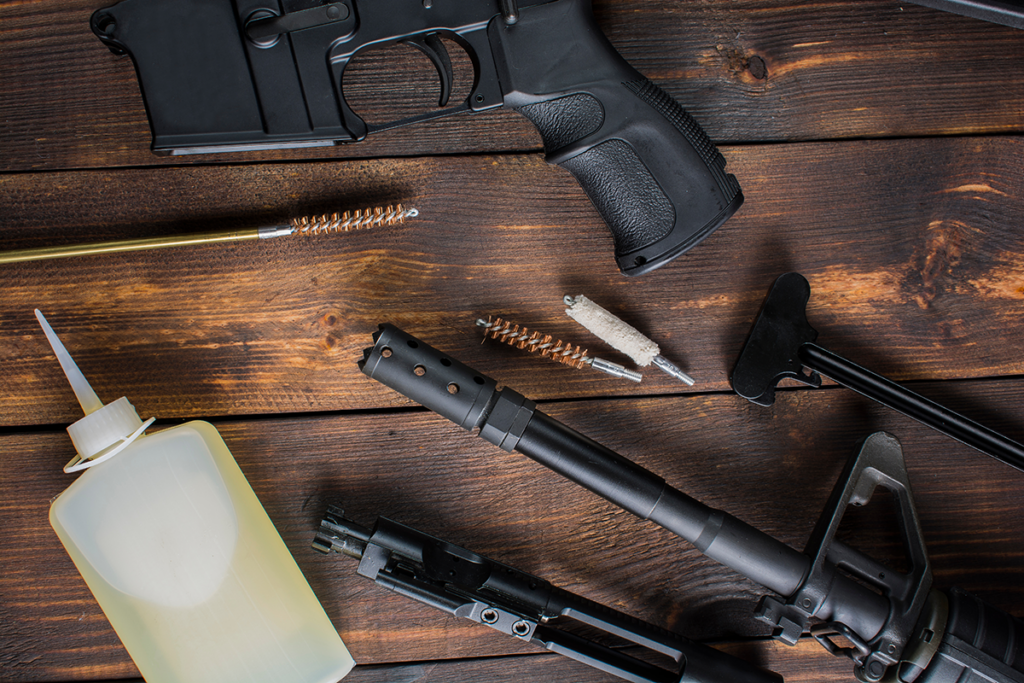
Tip 3: Routine Inspection and Wear Check
Routine inspections of your AR-15 are key to identifying wear and potential damage before they lead to malfunctions. Regular check-ups allow for proactive maintenance, ensuring the rifle’s reliability and safety. Here’s how to conduct a thorough inspection:
Exterior Inspection:
- General Condition: Begin with a visual and tactile inspection of the rifle’s exterior. Look for any obvious signs of damage like cracks, dents, or rust.
- Barrel: Examine the barrel for any bends, obstructions, or signs of excessive wear. Check the muzzle for damage which can affect accuracy.
Internal Inspection:
- Bolt Carrier Group: This is crucial for the rifle’s operation. Look for cracks or fractures, especially around the bolt lugs. Inspect the gas key to ensure it’s securely staked and not loose.
- Gas Rings: Check for wear or gaps in the gas rings on the bolt. If the bolt doesn’t stay extended under its own weight when stood on its end, it’s time to replace the rings.
- Trigger Assembly: Check for any signs of excessive wear or damage. Ensure the trigger and hammer pins are in place and not walking out.
- Buffer and Buffer Spring: These should be inspected for deformation or unusual wear. A worn buffer spring can affect the cycling of the rifle.
Functional Checks:
- Safety and Fire Selector: Make sure these are operating smoothly and correctly. Any sticking or difficulty in switching modes indicates a problem.
- Magazine Release and Catch: Test these to ensure they are working properly and the magazine seats and releases without issues.
Importance of Proactive Maintenance – Proactive maintenance, which includes regular inspections, is vital for several reasons:
- Preventing Malfunctions: Early detection of wear or damage can prevent malfunctions that might occur during use.
- Longevity: Addressing issues promptly extends the life of the rifle.
- Safety: Regular checks ensure the firearm is safe to operate.
Routine inspections are an indispensable part of maintaining your AR-15. They enable you to catch potential issues early, ensuring the rifle’s performance, safety, and longevity. Remember, a well-maintained AR-15 is a reliable companion.
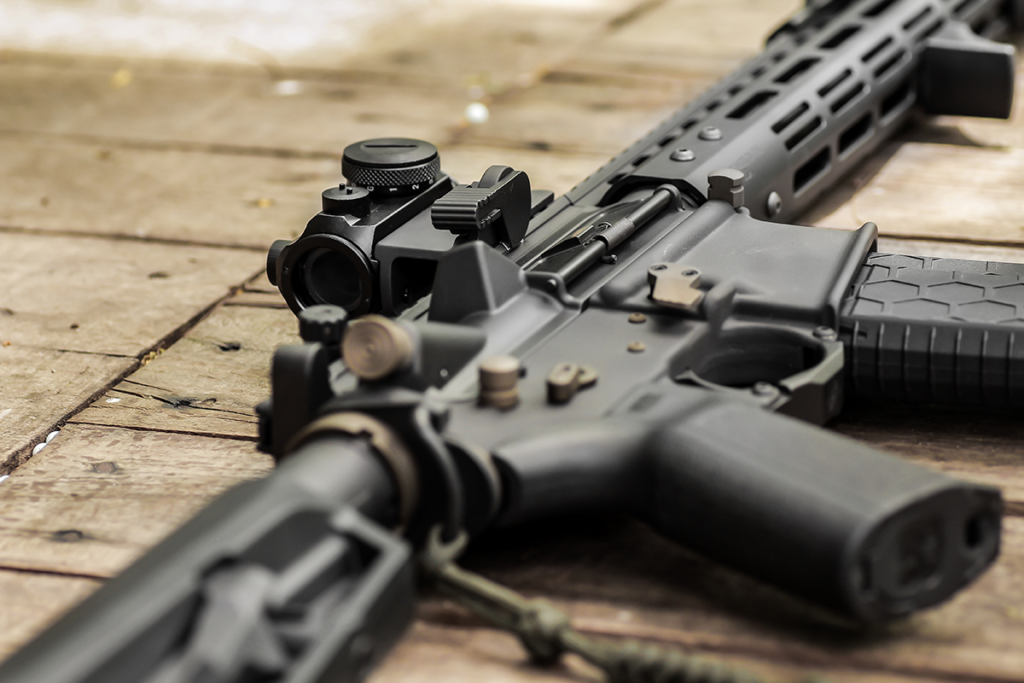
Tip 4: Selecting and Using the Right Ammunition
Selecting the right ammunition is as important as any physical maintenance you do on your AR-15. The type of ammo you use can significantly affect your rifle’s performance and its maintenance needs.
Choosing Quality Ammunition:
- Consistency is Key: Look for ammunition that promises consistent powder loads, bullet weights, and overall quality. Consistency in ammo translates to reliability in performance.
- Match Ammo to Your Rifle: Consider the twist rate of your AR-15’s barrel. A barrel with a faster twist rate (e.g., 1 in 7 inches) stabilizes heavier bullets better, whereas slower twist rates (e.g., 1 in 9 inches) are better for lighter bullets.
- Brand Reputation: Opt for brands with a strong reputation for quality. While it might be tempting to go for cheaper options, quality ammo reduces the risk of malfunctions and excessive wear on your rifle.
How Ammunition Affects Performance:
- Accuracy: High-quality ammunition tends to produce tighter groupings and more predictable trajectories.
- Recoil: The type of ammo can influence the recoil you experience, impacting both comfort and accuracy during shooting sessions.
Ammunition and Maintenance Needs:
- Barrel Wear: Cheaper or poorly manufactured ammo can lead to faster barrel wear due to unburnt powder or harder primers.
- Fouling: Some ammo types leave more residue in the barrel and action, necessitating more frequent cleaning to maintain optimal performance.
- Reliability: High-quality ammunition reduces the likelihood of misfires and jams, leading to a more reliable shooting experience.
To sum up, spending a bit more on high-quality ammunition can save you time and effort in maintenance in the long run. It ensures your AR-15 performs well and remains in good condition over time. Remember, every round you fire affects your rifle, so choose wisely.
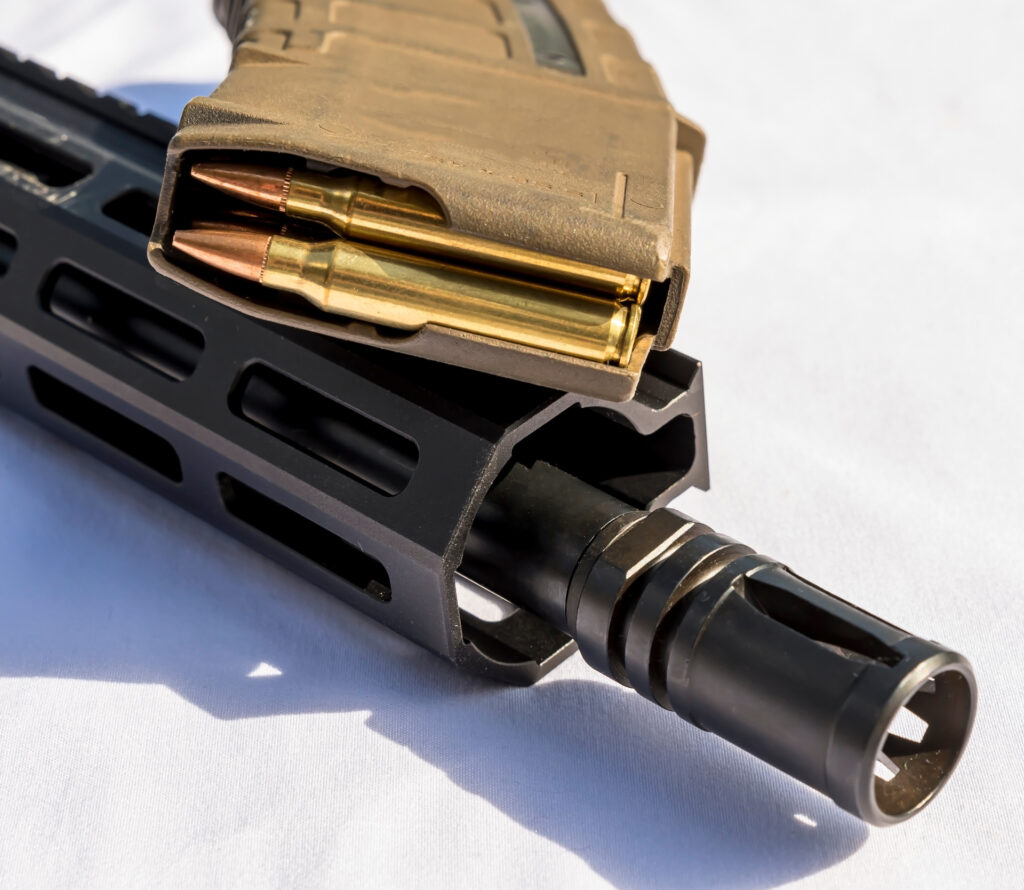
Tip 5: Proper Storage and Handling
Storing and handling your AR-15 correctly is essential for maintaining its condition and ensuring safety. Here are the best practices to follow:
Proper Storage:
- Use a Gun Safe or Lockable Cabinet: This is the safest way to store your AR-15. It protects the rifle from environmental factors and unauthorized access.
- Control Humidity: Too much moisture can lead to rust. Using dehumidifiers or silica gel packs in your storage area helps prevent this.
- Use Gun Socks or Cases: These protect the rifle from dust and scratches. For long-term storage, consider using vapor corrosion inhibitor (VCI) bags.
- Separate Ammunition: Store ammunition separately from the rifle. This is a safety measure and also a legal requirement in some areas.
Handling Best Practices:
- Always Treat the Rifle as Loaded: This is a fundamental safety rule. Even if you know it’s unloaded, handling it with care is crucial.
- Regular Check-ups: Before and after storing your AR-15, do a quick inspection to ensure it’s in good condition and functioning properly.
- Transport Safely: When transporting your rifle, use a secure and padded gun case. Make sure it’s unloaded and that you comply with all local laws regarding firearm transportation.
Safety Considerations:
- Educate Others: Anyone who has access to where you store your AR-15 should understand basic gun safety rules.
- Follow Legal Requirements: Be aware of and comply with all local laws regarding firearm storage and handling.
Storing and handling your AR-15 properly is about more than just maintaining its condition; it’s about responsibility. A well-maintained rifle stored and handled correctly is safer and more reliable, giving you peace of mind and ensuring the longevity of your firearm.
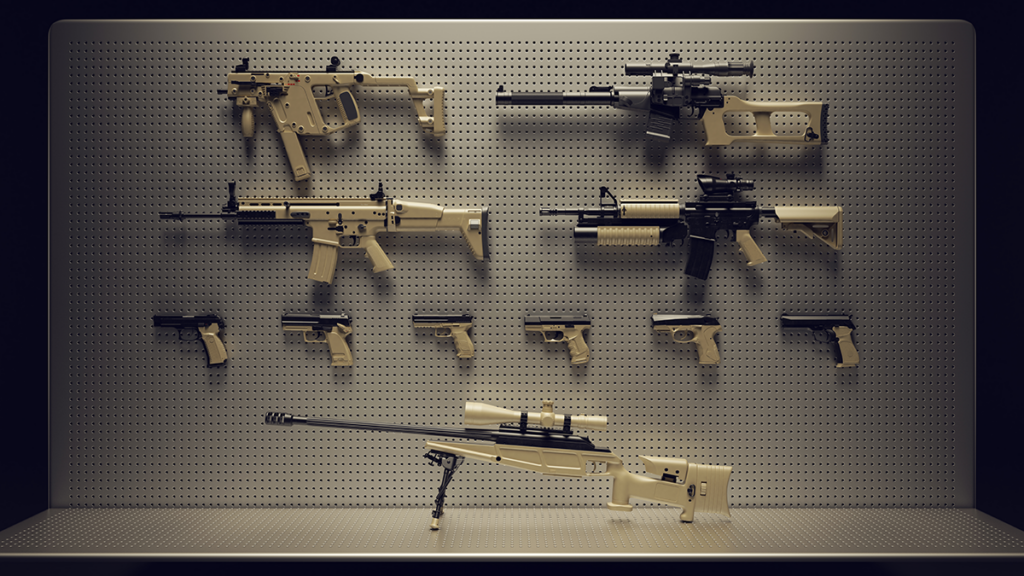
Troubleshooting Common AR-15 Issues
Owning an AR-15 means getting to know its quirks and how to handle them. Let’s talk about some usual challenges and how to solve them, keeping the tone relaxed yet informative.
Say you’re at the range, and there’s a hiccup with feeding or ejecting. This could be down to something as simple as needing to clean or lubricate the bolt carrier group more thoroughly. Or maybe it’s the magazine; if it’s dirty or damaged, that could be your problem right there. Regular upkeep of these components can help you avoid these frustrations.
Accuracy issues? This might happen if your sights are out of alignment, or there could be something up with the barrel. Regular checks and maintenance are your best friends here.
And what if your rifle doesn’t fire when you expect it to? The first thing to do is check the basics. Is the safety engaged, or is the chamber unexpectedly empty? Sometimes the simplest solutions are the most effective.
For more complex issues, it’s wise to consult a professional. But for the day-to-day stuff, a bit of know-how and a proactive approach will keep your AR-15 in good working order.
Getting to know these common problems and how to fix them not only keeps your AR-15 reliable but also enhances your skill and confidence as an owner. It’s all part of the journey with this incredible firearm.
Legal and Safety Considerations in AR-15 Maintenance
When it comes to owning and maintaining an AR-15, legal awareness and safety are as crucial as technical know-how. Every AR-15 owner should be well-versed in both to ensure not only compliance with the law but also the safety of themselves and those around them.
Understanding the legal landscape is essential. This means being aware of local and federal regulations that govern firearm ownership, storage, transport, and modifications. These laws can vary significantly, so staying informed about things like magazine capacity limits, permissible barrel lengths, and specific features your rifle can or cannot have is vital.
Safety should always be at the forefront of every aspect of owning and maintaining an AR-15. This starts with fundamental practices like treating the firearm as if it is always loaded and keeping it pointed in a safe direction. When performing maintenance, it’s crucial to ensure the firearm is unloaded and to work in a space free from distractions. Additionally, regular training or refresher courses in firearm safety are beneficial, both for new and experienced owners.
Remember, adhering to legal requirements and prioritizing safety are not just obligations but integral parts of being a responsible AR-15 owner. They ensure that your engagement with your firearm is responsible, respectful, and above all, safe.
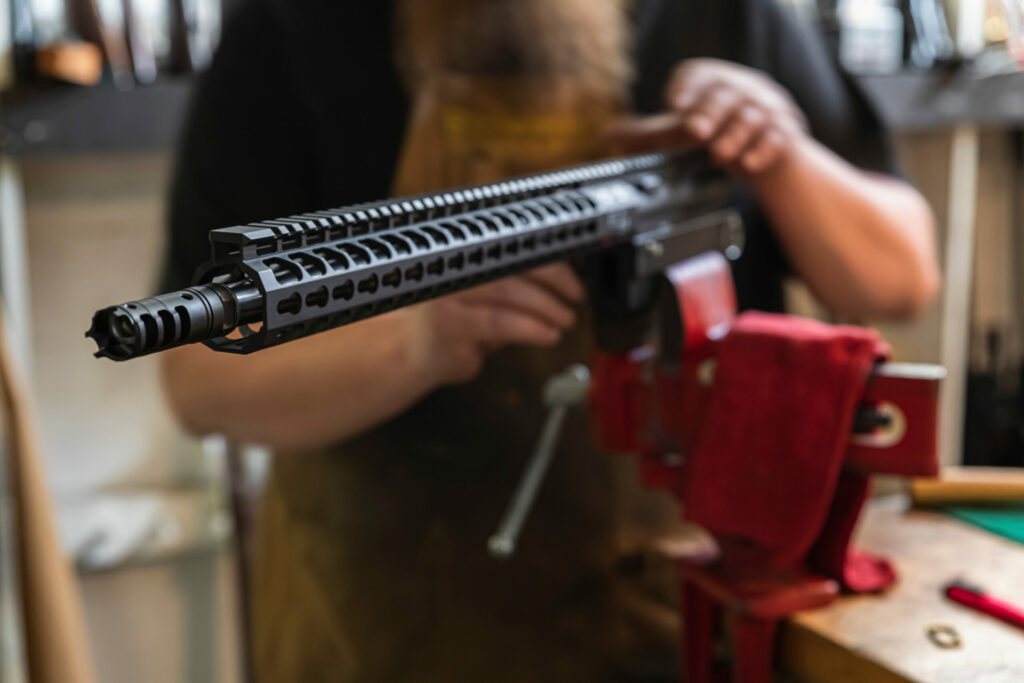
Advanced Maintenance: Beyond the Basics
For seasoned AR-15 owners, advanced maintenance techniques are a gateway to enhancing their rifle’s performance and longevity. These methods delve deeper, requiring a nuanced understanding of the rifle’s mechanics.
Tuning the Gas System: Central to advanced care is the gas system adjustment. This involves fine-tuning the gas block or using an adjustable bolt carrier group to match the rifle’s operation with specific ammunition types and shooting styles. Such precision in tuning not only optimizes performance but also mitigates wear on vital components.
Polishing for Performance: A step often overlooked is the polishing of internal parts like the feed ramps and bolt carrier group. This meticulous process reduces friction, thereby enabling smoother operation. It can also increase reliability across various ammunition types, a critical factor for those who regularly switch between different rounds.
Upgrading Key Components: Replacing standard parts with high-end alternatives can transform the AR-15’s functionality. Upgrades to the trigger assembly, bolt carrier group, and buffer system, when chosen wisely, can significantly enhance the rifle’s overall performance.
Customizing Recoil and Cycling: Particularly for long-range shooters, customizing buffer weights and spring tensions can fine-tune the rifle’s recoil and cycling characteristics. This not only improves the shooting experience but also aligns the rifle’s performance with individual preferences and needs.
Adopting these advanced maintenance techniques is more than just about upkeep; it’s about elevating the AR-15’s capabilities, ensuring it performs exceptionally and lasts longer. For the experienced owner, these skills are invaluable in maximizing the potential of their firearm.
Commitment to Responsible Ownership
Owning an AR-15 is a responsibility that extends far beyond its use. It encompasses a dedication to regular maintenance, an understanding of the rifle’s mechanics, and a commitment to safety. From the thorough cleaning of each component to the precise lubrication, regular inspection for wear, and the selection of quality ammunition, each aspect plays a crucial role in maintaining the rifle’s performance and safety. Proper storage and handling are equally important, ensuring the rifle’s condition and the safety of those around it. For those delving deeper, advanced maintenance techniques offer a way to further enhance the AR-15’s capabilities.
This journey of responsible ownership also involves staying informed about legal aspects and continually educating oneself about firearm safety. The AR-15 is a complex and powerful tool, and its ownership demands respect, knowledge, and a proactive approach to maintenance and safety. By embracing these principles, owners not only ensure the longevity and reliability of their firearm but also uphold the standards of responsible gun ownership.

